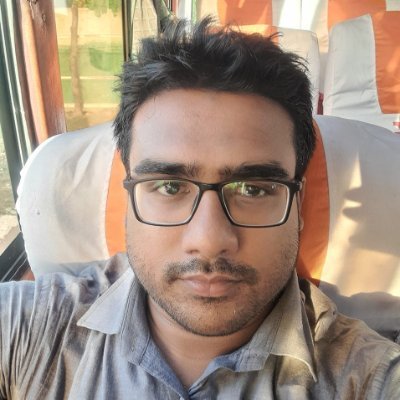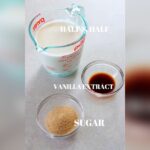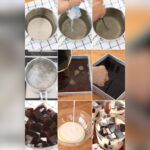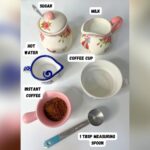If you love coffee, knowing how to make drip coffee can change your mornings. Imagine waking up to a fresh, rich cup brewed just the way you like it.
You don’t need fancy machines or complicated steps—just a few simple tricks. By mastering drip coffee, you control the flavor, strength, and aroma in every cup. Ready to turn your kitchen into your favorite coffee shop? Keep reading, and you’ll discover easy, proven steps to make the perfect drip coffee every time.
Your best cup is just a few pours away!

Choosing The Right Coffee Beans
Arabica and Robusta are the main coffee bean types. Arabica beans have a mild, sweet taste. Robusta beans offer a stronger, bitter flavor and more caffeine. Choosing the right bean impacts the coffee’s flavor greatly.
Freshness is key. Use beans roasted within the last two weeks. Freshly roasted beans keep their aroma and taste. Store beans in an airtight container to keep them fresh longer.
| Roast Level | Flavor | Color |
|---|---|---|
| Light Roast | Bright, fruity, and acidic | Light brown |
| Medium Roast | Balanced and smooth | Medium brown |
| Dark Roast | Bold, smoky, and bitter | Dark brown to black |
Choose a roast based on your taste. Experiment with different beans and roasts. This helps find your perfect drip coffee flavor.
Grinding Coffee Beans
Use a medium grind size for drip coffee. It looks like sand, not powder or chunks. This size helps water flow evenly through the coffee. Too fine, and the coffee will taste bitter. Too coarse, and it will be weak.
Grinding the beans just before brewing keeps the coffee fresh. Coffee starts to lose flavor soon after grinding. Freshly ground beans give the best aroma and taste. Avoid grinding too early to keep your coffee flavorful.
Selecting Filters And Equipment
Paper filters are popular because they trap oils and fine grounds. This results in a cleaner, brighter cup. They are disposable and easy to use but create waste. Reusable filters are usually made of metal or cloth. They let more oils through, giving a richer, fuller taste. Reusable filters save money and reduce trash but need cleaning after each use.
Drip coffee makers are electric machines that automate brewing. They heat water and drip it over coffee grounds slowly. Pour-over devices require manual pouring of hot water. They give you more control over brewing speed and strength. Pour-over is simple and portable but needs attention during brewing.
Preparing The Brewing Setup
Rinse the coffee filter with hot water. This removes paper taste and preheats the dripper. Pour out the water before adding coffee. Use fresh coffee grounds for best flavor.
Measure coffee and water carefully. A common ratio is 1 to 15 (coffee to water). For example, use 20 grams of coffee for 300 ml of water. Adjust to your taste.
Brewing Process
Initial wetting of coffee grounds is key. Pour just enough hot water to cover all grounds evenly. This step allows coffee to bloom, releasing gases trapped inside. Blooming takes about 30 to 45 seconds. It helps improve flavor and extraction.
Use a slow and steady pouring method. Begin pouring in a small circle from the center outward. Avoid pouring directly on the filter to prevent water from bypassing grounds. After initial wetting, pause to let coffee bloom fully.
Continue pouring water in small increments. Wait until the water level drops before adding more. This allows water to extract flavors evenly. Total brew time usually lasts 3 to 4 minutes. Keep the water temperature between 195°F and 205°F for best results.
Adjusting Coffee Strength
Coffee-to-water ratio is key to adjusting coffee strength. A common ratio is 1 to 16, meaning 1 part coffee to 16 parts water. For a stronger brew, use more coffee or less water. For a lighter taste, use less coffee or more water.
The number of scoops depends on cup size. A standard scoop holds about 10 grams of coffee.
| Cup Size (oz) | Number of Scoops | Notes |
|---|---|---|
| 6 oz | 1 scoop | Light to medium strength |
| 8 oz | 1.5 scoops | Standard strength |
| 12 oz | 2 scoops | Stronger brew |
Adjust scoops by taste. More scoops give a richer flavor. Fewer scoops make it milder. Try small changes to find your favorite taste.
Troubleshooting Common Issues
Weak coffee often means not enough coffee grounds or too coarse a grind. Use a medium grind for drip coffee. Too much water or too fast brewing also causes weak coffee. Pour water slowly and evenly.
Bitter coffee happens when coffee grounds are too fine or brewing time is too long. Use a medium grind and avoid letting coffee sit too long. Clean your coffee maker regularly to prevent old coffee buildup.
Uneven extraction means water does not flow through coffee grounds evenly. This causes some parts to be over-extracted and others under-extracted. Shake or stir coffee grounds gently to level them before brewing. Pour water in small circles to wet all grounds equally.
:max_bytes(150000):strip_icc()/How-to-Make-A-Really-Good-Cup-of-Drip-Coffee-FT-BLOG0923-6f3e7092beb04f5bbff824590b9e053e.jpg)
Serving And Enjoying
Serving drip coffee at the right temperature makes it taste best. The optimal serving temperature is between 130°F and 160°F. Hot coffee cools fast, so drink it soon after brewing. Avoid serving coffee that is too hot. It can burn your tongue and hide flavors.
Store leftover coffee in a clean, airtight container. Keep it in the fridge to stop it from tasting stale. Reheating coffee is okay, but do it gently. Use a microwave or warm it on the stove for a short time. Avoid boiling leftover coffee.
Tips From Experts
Consistency in measurements is key to brewing great drip coffee. Use a kitchen scale to weigh your coffee and water for the best results. This helps keep the flavor balanced every time. A common ratio is 1 gram of coffee to 15-17 grams of water. Adjust to taste but keep it consistent to avoid bitterness or weak coffee.
Water quality and temperature play a big role. Use fresh, clean water free of strong odors. The ideal water temperature is 195-205°F (90-96°C). Too hot water can burn the coffee, making it taste bitter. Too cold water will under-extract, causing weak flavor.
| Factor | Tip |
|---|---|
| Measurement | Use a scale for coffee and water |
| Coffee-to-Water Ratio | 1:15 to 1:17 for balanced taste |
| Water Quality | Fresh, clean, odor-free water |
| Water Temperature | 195-205°F (90-96°C) for best extraction |

Frequently Asked Questions
How Do You Make Drip Coffee Step By Step?
Boil fresh water and grind coffee beans. Rinse and place filter in dripper. Add grounds, pour hot water evenly. Let coffee drip fully. Serve immediately.
How Many Scoops Of Coffee For 4 Cups?
Use 4 scoops of coffee for 4 cups, following a 1 scoop per cup ratio. Adjust to taste if needed.
How Many Scoops Of Coffee Do You Put In A Drip Coffee Maker?
Use one level scoop (about 1 to 2 tablespoons) of coffee per 6 ounces of water in a drip coffee maker. Adjust to taste.
How To Make Regular Drip Coffee?
Add fresh cold water to the reservoir. Place a filter in the basket. Measure and add ground coffee. Start the machine to brew. Serve immediately for the best flavor.
Conclusion
Making drip coffee is simple and rewarding. Use fresh beans and clean equipment. Measure coffee and water carefully for best taste. Pour water slowly to allow grounds to bloom. Enjoy your brew right away for full flavor. Practice a few times to find your perfect cup.
Drip coffee offers a fresh, tasty start every morning.

Yes, working as , Food Blogger and Product Reviewer for last 6 years. Here you will get amazing deals for Smart kitchen products. I am your best source for the latest update in cooking trends. I provide insightful articles, reviews, and analysis on cutting-edge kitchen gadget. My mission is to empower readers with the knowledge they need to stay ahead in a rapidly evolving coking world. Join me as we explore the future of food technology and how it shapes our lives today and tomorrow.





